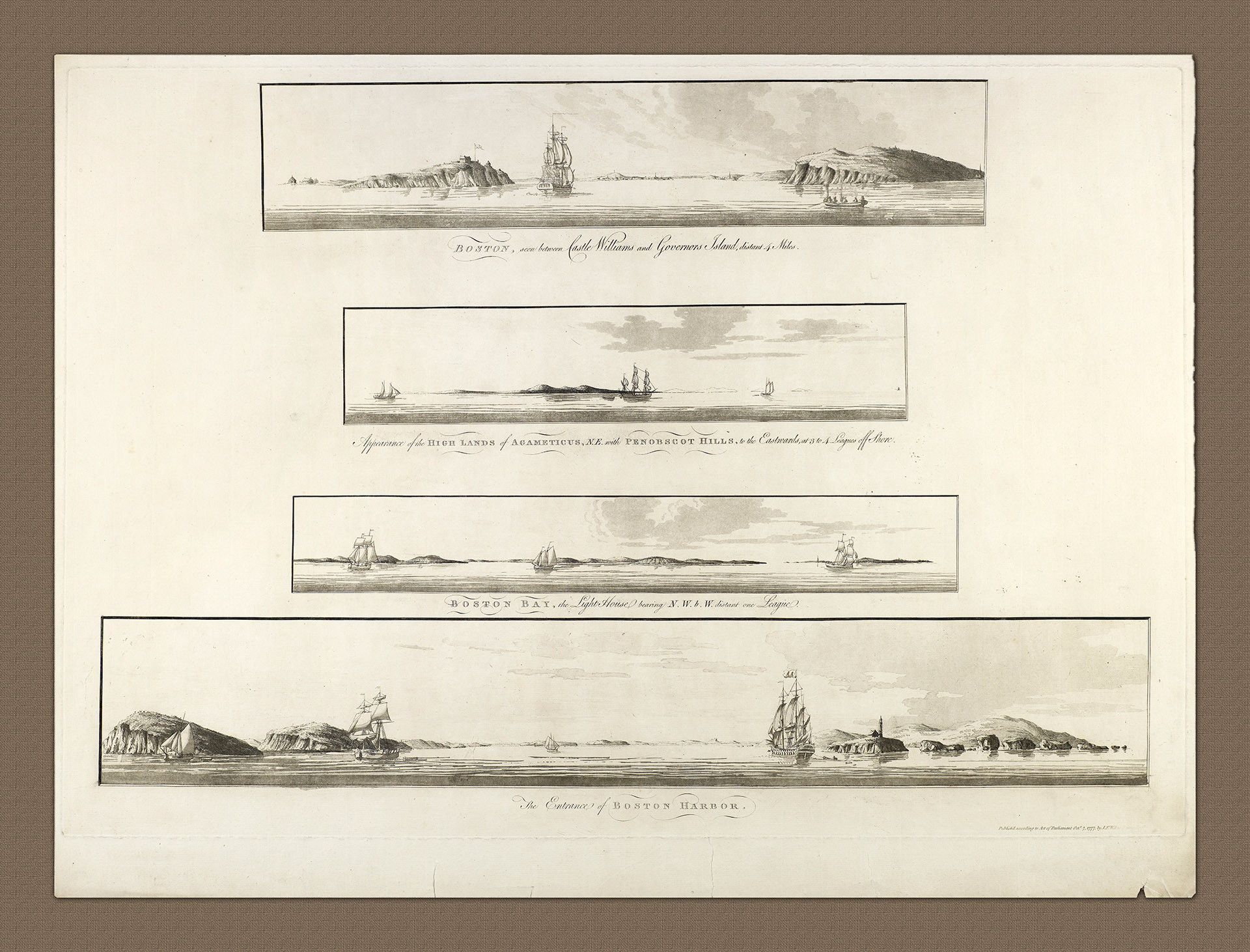A109v - Views of Boston harbour
Four plates on a single sheet forming different sailing views of the entrance into the harbour of Boston.
- 1777
- J.F.W. Des Barres
- h26" x w34.5"
- L
As early as 1759, the British Admiralty issued instructions to Sea Captains that all ships were required to make accurate observations as to the state of home and foreign coasts. Also that, where artists (or those able to draw) were on-board ship, they should provide illustrations.
The need to produce 'views' formed an increasingly important part of late 18th century navigation, and enabled navigators to be able to recognize land features as aids and set compass fixings to negotiate entrance into harbors.
The views included here are: 1. Boston seen between Castle William and Governors Island, distant 4 miles. 2. Appearance of the high lands of Agamenticus, NE with Penscobet hills, to the eastwards, at 3 to 4 leagues offshore.* 3. Boston Bay, the lighthouse bearing NW b W distant one league. 4. The entrance of Boston Harbour.
It is especially worth noting that the depiction of the lighthouse situated on the southernmost part of the Great Brewster called Beacon Island (now known as Little Brewster) is attached to Great Brewster by a sand bar. Benjamin Franklin wrote a poem about it (aged 12 years old at the time) called 'The Lighthouse Tragedy' after an incident in 1718 when 5 people were drowned nearby. The lighthouse, which was the first to be built in America, was destroyed during the siege of Boston on July 20 1775 by American troops who burned the wooden parts of the tower. The British worked to repair the tower, but the Americans returned on July 31 and again burned it down.
The British finally left the area on June 13 1776 setting off a charge as they went which completely destroyed the lighthouse. The remains of the metal lantern is said to have been used to make ladles for American cannons. The lighthouse was not rebuilt until 1783 (see related Heritage Charts A102, A104, A107 & A112).
Castle William, which appears on the 1769 chart of Boston Bay as 'Fort William' was armed with 72 cannons, ranging from 9 to 42 pounders (see Heritage Chart A107). In 1776 the British severely damaged the fortification as they left, although it was hastily repaired shortly after by troops under Lt. Colonel Paul Revere. Today Beacon Island has been joined into what was Dorchester neck through land-fill, and the 'Castle' is now known as 'Fort Independence'.
* Of the 4 plates included in this print by J.F.W. Des Barres it is important to recognise that the second plate of the high lands of Agameticus (now 'Agamenticus') and the Penoscobet Hills are in fact no where near Boston bur are located in New Hampshire and Maine respectively. The inclusion of the plate in the original pressing or pull is likely down to no more than a need to use-up the space.
- Views of Boston harbour


